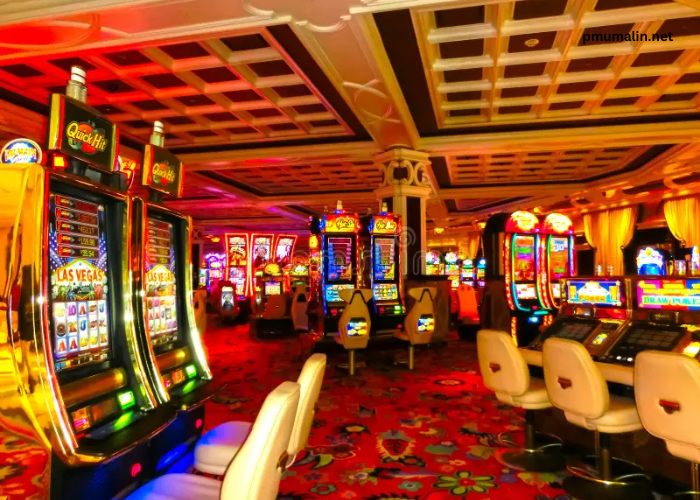Slot machines are a ubiquitous sight in casinos around the world, attracting millions of players with their promise of instant wealth. While many people view slots as a simple game of chance, the truth is that there’s a sophisticated psychology behind their design. In this article, we’ll delve into the intricacies of slot machine design and explore how casinos use psychological tactics to keep players engaged.
The Slot Machine’s Irresistible Charm
Slot machines have a unique allure that captivates players from all walks of life. Their simplicity, flashing lights, and captivating sounds create an environment that entices individuals to keep playing. This allure is no accident; it’s carefully engineered to keep players engaged for longer periods.
The Sensory Overload: Visual and Auditory Stimulation
Casinos use a combination of visual and auditory stimuli to create an immersive gambling experience. Slot machines are designed with vibrant graphics, colorful symbols, and animations that catch players’ attention. The sound of spinning reels, winning jingles, and the clinking of coins add excitement to the gameplay.
The Illusion of Control: Button-Pressing Psychology
Slot machines often give players the illusion of control by allowing them to press buttons, pull levers, or tap screens to initiate spins. This tactile interaction makes players feel like they have a say in the outcome, even though the results are purely random. This sense of control can be addictive and keeps players coming back for more.
Almost Winning: The Near-Miss Phenomenon
One of the most potent psychological tricks employed by slot machines is the near-miss phenomenon. This occurs when players come tantalizingly close to a winning combination but fall just short. These near-misses trigger the brain’s reward system, encouraging players to believe that a jackpot is within their grasp, keeping them playing in pursuit of that elusive win.
Reinforcement and Rewards: The Slot Machine’s Hook
Slot machines use a variable reinforcement schedule, which means that rewards are given out intermittently and unpredictably. This system keeps players engaged by creating a sense of anticipation and excitement. Players are more likely to continue playing when they don’t know when the next big win will occur.
Chasing the Dream: The Temptation of Progressive Jackpots
Progressive jackpot slots are designed to entice players with the prospect of life-changing wins. These jackpots increase with each bet made, creating a sense of communal excitement as players chase the ever-growing prize pool. The allure of winning millions keeps players coming back to the slots, even if their chances are slim.
Slot Gacor: The Myth and Reality
In recent years, the term slot gacor has gained popularity among gamblers. It refers to a slot machine that is believed to be “hot” or “loose,” offering better odds of winning. While casinos may adjust the payout percentages of their machines, there is no foolproof way to predict when a slot will be “gacor.” This myth can lead players to chase after elusive machines, further fueling their gambling habits.
Conclusion
Heading: The Endless Allure: Slot Machines and Human Psychology
Slot machines are not just games of chance; they are finely tuned psychological instruments designed to captivate players and keep them coming back for more. By employing sensory overload, the illusion of control, the near-miss phenomenon, and other tactics, casinos create an environment where players are more likely to spend their time and money. Understanding the psychology behind slot machine design can help individuals make more informed choices about their gambling habits and resist the allure of these captivating devices.







